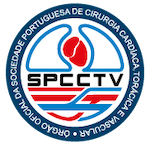Treatment Of Post-Operative Chylothorax: The Role Of Intranodal Lymphangiography And Thoracic Duct Disruption
DOI:
https://doi.org/10.48729/pjctvs.343Keywords:
Chylothorax, Lymphangiography, Lipiodol, Thoracic duct, Interventional RadiologyAbstract
Thoracic duct embolization has been increasingly adopted as a first-line therapy of chylothorax and this procedure includes lipiodol lymphangiography, thoracic duct access and embolization. Lymphangiography itself has a therapeutic role, with volume-dependent success rates of 37%-97% and even a reported 100% success rate in outputs of < 500 mL/day. We present a clinical case of a 48-years-old man diagnosed with esophageal squamous cell carcinoma, who underwent esophagectomy and presented with post-operative high-output (> 1L/day) chylothorax; thoracic duct embolization was proposed. Even though thoracic duct access and embolization were not achieved due to technical and anatomical factors, lipiodol lymphangiography and possibly thoracic duct maceration (after several punctures/attempts) contributed to the clinical success of the procedure, and this chylothorax with output values superior to those reported in the literature resolved within three days. As such, the therapeutic role of intranodal lymphangiography and thoracic duct disruption should be taken into account.
Downloads
References
Jun H, Hur S. Interventional Radiology Treatment for Postoperative Chylothorax. Korean J Thorac Cardiovasc Surg. 2020 Aug;53(4):200–4.
Majdalany BS, Murrey DAJ, Kapoor BS, Cain TR, Ganguli S, Kent MS, et al. ACR Appropriateness Criteria(®) Chylothorax Treatment Planning. J Am Coll Radiol. 2017 May;14(5S):S118–26.
Zurcher KS, Huynh KN, Khurana A, Majdalany BS, Toskich B, Kriegshauser JS, et al. Interventional Management of Acquired Lymphatic Disorders. Radiogr a Rev Publ Radiol Soc North Am Inc. 2022 Oct;42(6):1621–37.
Lee EW, Shin JH, Ko HK, Park J, Kim SH, Sung K-B. Lymphangiography to treat postoperative lymphatic leakage: a technical review. Korean J Radiol. 2014;15(6):724–32.
Bender B, Murthy V, Chamberlain RS. The changing management of chylothorax in the modern era. Eur J cardio-thoracic Surg Off J Eur Assoc Cardio-thoracic Surg. 2016 Jan;49(1):18–24.
Rajebi MR, Chaudry G, Padua HM, Dillon B, Yilmaz S, Arnold RW, et al. Intranodal lymphangiography: feasibility and preliminary experience in children. J Vasc Interv Radiol. 2011 Sep;22(9):1300–5.
Itkin M, Kucharczuk JC, Kwak A, Trerotola SO, Kaiser LR. Nonoperative thoracic duct embolization for traumatic thoracic duct leak : Experience in 109 patients. J Thorac Cardiovasc Surg [Internet]. 2010;139(3):584–90. Available from: http://dx.doi.org/10.1016/j.jtcvs.2009.11.025
Kim PH, Tsauo J, Shin JH. Lymphatic Interventions for Chylothorax: A Systematic Review and Meta-Analysis. J Vasc Interv Radiol. 2018 Feb;29(2):194-202.e4.
Gruber-rouh T, Naguib NNN, Lehnert T, Harth M, Thalhammer A, Beeres M, et al. Direct lymphangiography as treatment option of lymphatic leakage : Indications , outcomes and role in patient ’ s management. Eur J Radiol [Internet]. 2014;83(12):2167–71. Available from: http:// dx.doi.org/10.1016/j.ejrad.2014.09.013
Yannes M, Shin D, McCluskey K, Varma R, Santos E. Comparative Analysis of Intranodal Lymphangiography with Percutaneous Intervention for Postsurgical Chylous Effusions. J Vasc Interv Radiol. 2017 May;28(5):704–11.
Downloads
Published
How to Cite
License
Copyright (c) 2023 Portuguese Journal of Cardiac Thoracic and Vascular Surgery

This work is licensed under a Creative Commons Attribution 4.0 International License.





